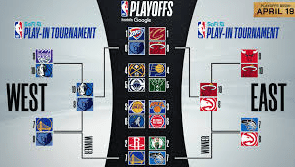From Greece to Australia and Beyond How the NBA’s Opening Night With 135 International Players Is Changing Basketball Forever

When the lights dim and the sneakers squeak under the floodlights for the start of the 2025-26 season of the NBA, there’s something different in the air not just the buzz of a new campaign, but a feeling that the game is truly global. Imagine this: 135 players from 43 countries across six continents are on opening-night rosters, tying or breaking records everywhere. (NBA)
I remember the first time I watched a European player in the NBA feels like ages ago now. Back then you thought, “Ah, nice to see them here,” but maybe it still felt a little novelty. But now? It’s become the norm. And this season, the numbers shout it out: a record 71 European players alone, including the likes of Giannis Antetokounmpo (Greece), Nikola Jokić (Serbia), Luka Dončić (Slovenia), and Victor Wembanyama (France) all featured. (NBA)

A Changing Court, A Changing World
It’s easy to say “the NBA is more global now,” but what exactly does that mean? For me, it’s about seeing names I didn’t grow up hearing in U.S. high school gyms or TV broadcasts places like France sending 19 players, Australia sending 13, Germany seven, Serbia six. Canada still leads outside the U.S. with 23 players. (NBA)
Think about that for a moment. Every city you go to in Canada, or Australia, or Germany, or many others, a kid can now point to someone from their country playing in the biggest basketball league in the world. That becomes inspiration; that becomes possibility.
What’s more, every one of the 30 NBA teams has at least one international player. (The Straits Times) The game is no longer “America’s league with a few imports.” This season it’s “global talent, global storylines, global ambition.”
Take the story of Victor Wembanyama, for instance: young, French, huge expectations, and now part of this wave of international energy. Or Giannis, who has been a global face for some time but now stands with a larger cast than ever before. When I read the numbers 55 + players born in Africa or with African parentage it makes you pause and consider the full spectrum of talent and background happening right now. (NBA)

When I imagine a locker room now, I don’t imagine one language, one zone of childhood courts and gyms. I imagine shifting accents, varied backgrounds, different routes to the league. And that changes the texture of the game not just how they play, but how they live it, share it, and how it resonates when fans in Tokyo, Lagos, Paris, or Sydney tune in
What This Means for the Game and for Us
One night I was chatting with a friend in Europe who said: “When I watch the NBA now, I don’t feel like I’m watching something far away. I see my flag on the court.” And that’s the heart of this shift. Because what happens when your country sees itself reflected on the big stage? More interest. More growth. More future stars.
The NBA is also clearly leaning into this globally. There’s talk of developing a Europe-based league or at least stronger ties with the continent. (AP News) When the league starts thinking “world,” it changes everything from scouting to training programs to fan engagement.
For fans, this opens a new dimension. Maybe you’re a casual follower in Islamabad, Pakistan, and you spot a player with ties to your region or someone from a country you didn’t link with basketball before. Suddenly you’re leaning in. Suddenly your eyes light up at a pass not just because a star made it, but because someone who travelled a whole different road made it.
From a storytelling side, it’s richer. Behind each jersey is a story: leaving home at 17, adjusting to a new language, different culture, still chasing that ring. And when you tell your readers about that path how the Australian kid fights for a roster spot, how the French high-school import learns to thrive in the U.S it becomes more than stat lines. It becomes human.
For the NBA-stat hounds, the record rolls keep stacking: last seven MVPs? International players. Four international players have won the last seven Kia NBA MVP Awards: Gilgeous-Alexander, Jokić, Embiid, Antetokounmpo. (NBA) And that kind of consistency means this isn’t a fad or a blip it’s the league’s new reality.
In practical terms for us article-writers: this is fertile ground. Whether you’re writing about player journeys, team compositions, global fan stories, developmental pathways, or simply “how the NBA looks different now,” the story writes itself. Readers in different countries will feel seen; readers in the U.S. will feel a fresh angle.

One moment I want to share: I found myself scrolling through a list of lesser-known names from lesser-known basketball nations Brazil, Congo, Guinea, Slovenia, Latvia and I felt a swell of “Wow, this is different.” Because every one of those names is a thread in a bigger tapestry of basketball’s growth. When one of those players has a breakout season, their country lights up. And when their country lights up, fans around the world lean in.
So here we are opening night 2025-26. The whistle blows, the ball drops. And as you watch, remember: 135 international players from 43 countries, six continents. It’s not just a number. It’s a statement. The NBA isn’t catching up to global basketball it’s leading the way. And for every hoop dreamer from Manila to Madrid, from Lagos to Ljubljana, it’s proof: the stage is global. The possibilities are real. The next story could be yours.